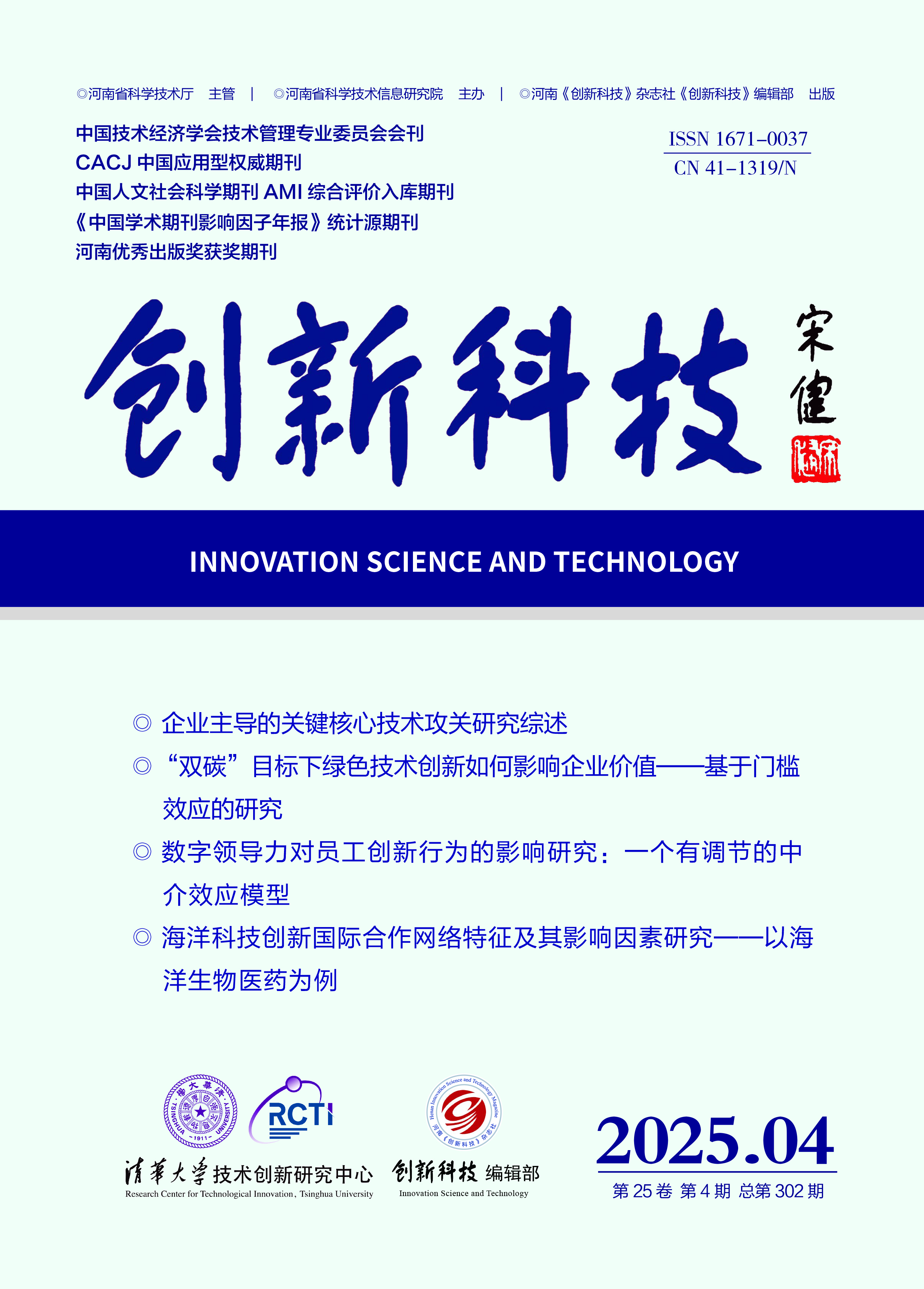INNOVATION SCIENCE AND TECHNOLOGY
Quick Search

All publication are peer-review
Peer review will take the from of double-blind review Judge objectively and impartially
There is no conflict of interest for the reviewer
Review articles shall be kept strictly confidential prior to publication
"New Quality Productive Forces and High-level Scientific & Technological Self-reliance and Strength" Column
The Research of Influence and Mechanism of Producer Services Agglomeration on the Development of New Quality Productivity
Lu Yuxiu1 , Fang Xingming2
(1.Business School, Henan Normal University, Xinxiang 453007, China; 2.The West Center for Economic Re⁃ search, Southwestern University of Finance and Economics, Chengdu 611130, China)
Abstract: Strengthening the agglomeration of producer services can release huge productivity effects; however, whether it can accelerate the development of new quality productivity remains to be further studied. Based on the balanced panel data of 30 provinces (cities) in China from 2013 to 2022, this study constructs an index for new quality productivity. We calculate it with the entropy method, referring to the three dimensions of new technology, new production, and new industries. Meanwhile, adopting the dual-way fixed effects model, mediation effect model, and threshold model, we evaluate the economic effects of producer services agglomeration on new quality productivity. The results indicate: ①Producer services agglomeration significantly accelerates the development of new quality productivity. In view of each refined dimension, it significantly promotes the development of new technology and new production; however, no obvi⁃ ous impact on new industries. ②The impact of producer services agglomeration on new quality productivity demonstrates a certain "Matthew Effect", where regions with higher levels of new quality productivity tend to gain more from agglomeration effects. ③The threshold effect shows that producer services agglomeration on new quality productivity has a non-linear increasing "marginal effect"; while digital infrastructure, market-oriented development, and factor mobility play a single threshold effect. ④Mechanism analysis indicates that industrial transformation and upgrading, as well as technological progress, serve as mediating channels for producer services agglomeration. In addition, industrial transformation and upgrading involves industrial structure upgrading and rationalization, and technological progress is defined by low-risk technology ac⁃ quisition and high-risk technological innovation. Moreover, the development of e-commerce strengthens the positive role of producer services agglomeration, playing a positive regulatory role. ⑤Heterogeneity analysis shows that producer services agglomeration has a larger part in the southern region, the areas of implementation of big data comprehensive pilot zone, and the national innovative regions. Based on the above research conclusions, this paper proposes the fol⁃ lowing policy recommendations from four aspects. Firstly, it is necessary to strengthen the devel⁃ opment of producer services agglomeration, paying attention to improving its level and quality, as well as allocating service industries to optimize its spatial layout rationally. Secondly, consider⁃ ing the inherent characteristics of agglomeration effect release, we should improve digital infra⁃ structure, coordinate the relationship between the government and the market, and facilitate the flow of resource factors. Thirdly, it is vital to focus on technological innovation and industrial up⁃ grading, to alleviate the formation barriers for new quality productivity, especially emphasizing the government's investment in technological research and development, and attaching impor⁃ tance to technological progress as the core driving force of industrial advancement. Fourthly, given the significant heterogeneity of agglomeration effects, new quality productivity should be cultivated based on local conditions.
Key words: producer services agglomeration; new quality productivity; digital infrastructure; e-commerce